 Abraham Lincoln
If given the truth, the people can be depended upon to meet any national crisis...
Abraham Lincoln
If given the truth, the people can be depended upon to meet any national crisis...
 Guildford news...
for Guildford people, brought to you by Guildford reporters - Guildford's own news service
Guildford news...
for Guildford people, brought to you by Guildford reporters - Guildford's own news service
Guildford’s Wartime RAF Landing Ground
Published on: 22 Jun, 2013
Updated on: 22 Jun, 2013
By Frank Phillipson
During the Second World War the RAF established a landing ground in a field one and a half miles to the east of Guildford on Merrow Downs.
Part of Burwood Farm, the field was situated to the north of White Lane just under half a mile east of its junction with One Tree Hill Road and known as “40 Acre Field”. It was not the site of airshows staged in the vicinity in 1933 and 1935 which were held in a field belonging to Harrow Hill Farm to the east of the A25 road at Newlands Corner.
At this time Burwood Farm was occupied by the White family. “J. White & Son” running Warren Farm Dairy and Thomas Charles “Charlie” White, operating a machinery hire business (the 1944 Kelly’s Directory lists him as a Steam Roller Contractor). Charlie, in an effort to ensure that his horses were not requisitioned for war use, organised a mounted section of the Home Guard to patrol the Downs and the Chantries. This also ensured that they received a horse feed ration.
RAF Merrow (if it ever had that title) was one of a number of satellite airfields/landing grounds used by No.18.Elementary Flying Training School (EFTS) situated at Fairoaks aerodrome near Chobham. This school was opened on October 2, 1937, by General Aircraft Ltd, and was taken over by the RAF in September 1939.
To relieve pressure at Fairoaks, No.18.EFTS used four other landing grounds. Two Relief Landing Grounds (RLG’s), at which aircraft were based, were located at Smith’s Lawn, Windsor Great Park and in a field at Winkfield near Bracknell (May 1941 until July 1945). Two further landing grounds, were used to practice forced landings (Emergency Landing Grounds (ELG’s) one at Bray near Maidenhead, and the one at Merrow Downs.
The landing ground at Merrow may also have been used to do “circuits and bumps” (i.e. practice landings and takeoffs) and may additionally been designated as a general ELG for any aircraft able to land within its limited boundaries. Aircraft coming into land normally approached from the south-east and took-off to the north-west.
At Merrow Downs there were no facilities except for a windsock on the highest point of the western field boundary. The field straddles the ridge of the North Downs with a gentle slope downwards from east to west. To the south and north the field slopes away more significantly.
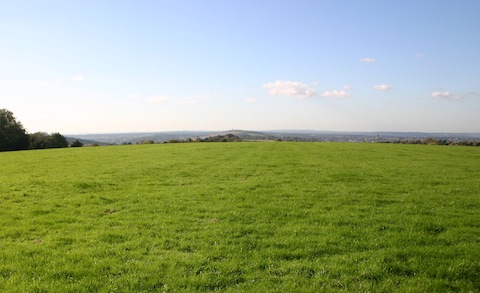
View Westwards from Landing Ground with the end of the Hog’s Back in the centre and Guildford Cathedral to the right.
No.18.EFTS used the RAF’s ubiquitous training aircraft the De Havilland DH82a Tiger Moth single engine biplane. These aircraft had their upper surfaces camouflage painted and the undersides painted bright yellow to denote them as training aircraft. They were two seaters usually occupied by an instructor and a trainee pilot.
The use of the field appears to have been on an informal basis as there seems to be no documentary evidence of a lease or agreement. The first mention of Merrow ELG in No.18.EFTS’s “Operational Record Book” is on November 12, 1943 (although it had been in use by them before this), when it says “Morrow (sic) force landing field has been washed out”.
In 1942 Tyting House, to the south of the landing ground in Halfpenny Lane, had been requisitioned by the Special Operations Executive (SOE) as “Special Training School 28”. It also became home to a SOE Security Section which vetted returning agents to see if they posed a security risk.
RAF Tempsford in Bedfordshire was the main centre for despatching SOE agents and equipment into occupied European countries. It is however remotely possible that Merrow Landing Ground may have been used to pick up or drop off agents by aircraft possibly as part of their training. If so, this would probably have been by using the Westland Lysander aircraft.
A number of people remember Tiger Moth aircraft activity on the Downs during the war but one story stands out. Probably in 1940, Michael Knight (who was seven or eight at the time), was “walking on Pewley Downs, which were at the back of our house, when I saw three aircraft flying [from the east] down the valley [between St Martha’s and the North Downs]…. Behind us a yellow biplane was doing… …loops above an RAF training station which was based in a field nearby. The three aircraft were a Heinkel [111] bomber flanked by two Me 109s. They flew down the valley so low that we were looking down on the pilots. The bomber dropped a bomb on the main line railway, but missed. The biplane continued doing… …loops and the three enemy aircraft flew off!”
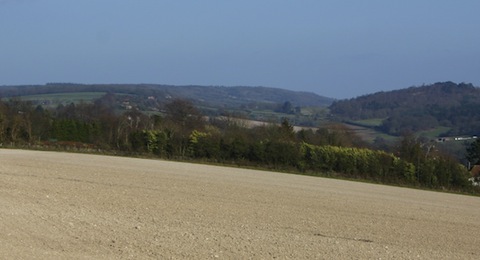
Merrow LG (highest field top left) and St Martha’s on the right, looking east from the south side of The Mount.
Another wartime school boy remembers being with a party of children from his school picking rose hips (for the vitamin C content) in the woodland to the east of the airfield. As they were doing this a Tiger Moth came in and landed, taxied over toward the children and stopped. The children rushed over and surrounded it to get a better look. It was a while before the teachers could round up the children and let the aircraft take off again!
A young lad at the time, Bryan Collings, remembers that for a while in 1943 or 1944 the landing ground was also used as a base for a flight of about three RAF Taylorcraft Auster aircraft (light single engined monoplane aircraft used for artillery spotting). They were parked in the north east corner of the field with at least three tents erected for personnel. It is likely that these aircraft left after D-Day to assist the British Army in France.
Another local RAF presence in 1940 was at Newlands Corner where a Radio Tender (Truck) was positioned. Early in the war two-way communications between fighter aircraft and their controlling RAF Fighter Command Sector Stations was carried out using high frequency radio signals. These signals had limited range and therefore mobile relay stations (Radio Tenders) were set up to extend the distance of communications. These relay stations were connected to the Sector Stations by a high quality telephone line. The one at Newlands Corner was initially used by Tangmere Sector but was transferred to Northolt following a request of June 22, 1940.
On the subject of telecommunications, Peter Stanley of Merrow remembers that there was a rectangular area of telegraph poles with a network of wires strung between them, seemingly for radio purposes, situated between the 3rd hole and 4th tee of the golf course and Trodds Lane. Vehicles and trailers for equipment where positioned at the north east corner of this site. Any further information on this would be welcome. (send me an email to: frank.phillipson@ntlworld.com).
In 1945 a section of the RAF Regiment was in a camp on Merrow Downs near Newlands Corner (possibly in connection with the radio station). Their presence was noted by the Merrow Downs Conservation Committee, who asked their clerk to write to the commanding officer to arrange for rubbish that had been dumped nearby, to be removed.
It has been possible to trace four accidents at or near the Merrow Downs landing ground during and after the war.
In January 1941 a Bristol Blenheim Mk I of RAF No.2 School of Army Co-operation (SAC), Andover made a forced landing at Merrow Downs, possibly due to poor weather, and was left there while its crew returned to their airfield by other means. Bryan Collings says it was parked up next to the eastern boundary of the field for quite a while.
On January 17, an Avro Anson Mk I (serial number: N9553), a general purpose twin engine monoplane, of ‘C’ Flight No.2. SAC brought back an aircrew so that the Blenheim could be flown out. Whilst attempting to take off again, the Anson “failed to become airborne… due to the smallness of the field, lack of wind and heavy surface (snow)…[and] struck windward hedge” and crashed at 12.40am into outbuildings of “Whiteways” a house south of White Lane.
The aircraft was wrecked and written off but fortunately there were no injuries. The pilot, Flying Officer T A Stewart said that in addition to the above adverse conditions he “could not get throttle into emergency position, as it was wired up – this done by the makers”. There was no disciplinary action against Stewart as he was found not entirely to blame.
Later Bryan Collings saw lots of debris in the trees and sheds next to “Whiteways” near the south-east corner of the landing ground which he took to be the remains of an Airspeed Oxford twin engined training aircraft.
After the Anson’s crash it is not known how the Blenheim was recovered. Possibly the aircraft was dismantled and taken away by road. This is what Bryan Collings believes was most likely to have happened. The aerial photograph from c.1947 shows what seems to be a road access out of the field mid-way along the eastern boundary leading to the Drove Road and then out to Newlands Corner. Road access through the farm or along White Lane seems unlikely given the size of an aircraft transporter vehicle.
On December 11, 1941, a Tiger Moth Mk II (serial number: T6466) of No.18.EFTS force landed in the woods at Newlands Corner due to engine failure in flight. This seems to have been due to an over rich fuel mixture setting which the pilot, Flying Officer E R Dutt, could possibly have cleared had he been at a greater height. The aircraft was categorised as repairable and there doesn’t appear to have been any injury. On the “Aircraft Accident Card” the aircraft “Duty” is shown as “Duel” but there is no mention of a pupil pilot and no reference to any disciplinary action.
Just over a year later, on March 22, 1943, at 3pm, another No.18. EFTS Tiger Moth Mk II (serial number: T7260), crashed on the landing ground. The “Aircraft Accident Card” locates the crash as at “Merrow, F./L. Field” (Force Landing Field). The pupil pilot, Australian Sgt.Bernard.M.Pritchard RAAF, misjudged the landing and undershot the field and “struck bushes on airfield boundary and overturned”. At the time, Pritchard and his instructor Flying Officer E.Cornish had been airborne for 20 minutes and were involved in flying a “Training Oval”. There were no injuries but the aircraft was written off and only suitable for component recovery, while the engine was repairable. No.18.EFTS’s Commanding Officer stated that the instructor failed to take corrective action early enough and in consequence Cornish received a caution.
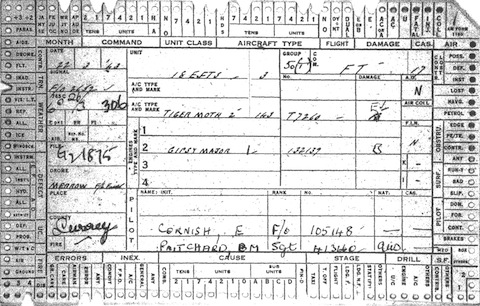
Aircraft Accident Card for Tiger Moth T7260 crash of 22nd March 1943 with location as at “Merrow F/L Field”. Courtesy of RAF Museum.
Pritchard, now a Warrant Officer, was later killed on April 30, 1944 during the Battle of Imphal in India. His No.60 Squadron Hurricane was hit during a ground attack on some Japanese gun emplacements but he successfully baled out. Unfortunately he landed near a patrol of British Gurkhas and when challenged by them made a run for it. As he did this he was shot and killed by them.
Whether Merrow Downs was used in the post-war period is uncertain at present. However on Sunday April 24, 1949 a Tiger Moth (serial number: T7449) of the London University Air Squadron based at Fairoaks aerodrome crashed at 4.45pm half a mile west of Newlands Corner on the Drove Road. The pilot, Flying Officer George Brian Clark, RAFVR (Volunteer Reserve) was flying solo and had been airborne for 25 minutes engaged on a local map reading exercise. He was seen to fly almost a complete circle (possibly over the landing ground). Then, when losing height in a steep right-hand turn, the lower right-hand wing caught the top of a tree, swung the aircraft around and sent it crashing to the ground where it immediately caught fire.
Scores of people out on the Sunday afternoon at Newlands Corner witnessed the crash and several rushed to the scene. The closest person to the crash was Reginald Wright from Camberley, who was 30 to 40 yards away. He rushed to the plane and dodging the flames tried to get F.O. Clark out. The pilot however was still strapped into the aircraft and Wright and others with him were forced back by the heat of the fire. Somehow Clark managed to release his straps and get into a sitting position, whereupon Mr Wright and others dashed in and pulled him clear of the flaming aircraft. After first aid had been given he was lifted into Mr Wright’s “shooting brake” and taken to the Royal Surrey County Hospital. The fire brigade were unable to do anything to save the aircraft.
F.O. Clark was badly burned on his head and hands, and his condition was stated as being fairly serious. However, he later improved and was taken to the burns unit at East Grinstead Hospital. The RAF Court of Inquiry could find no precise reasons for the accident, but came to the conclusion that it was primarily due to the pilot blacking out. It felt that an eye injury Clark sustained was partly due to the poor design of the Mk III goggles. In additional notes, Clark’s Commanding Officer thought that he had attempted too much flying in one day after a long period of inactivity. The Air Officer Commanding said that he was at a loss to understand how the accident happened as there was no evidence that the pilot fell asleep. The report recommended that the “courageous action of certain individuals in attempting and finally succeeding in dragging the pilot clear of the burning aircraft should in some way [be] officially recognised”.
Today Merrow Landing Ground is now just a grassy field used to graze horses. The only landings made there now are by birds. But for a few years it played an important role in training pilots for war and was the scene of a few fortunately non fatal mishaps.
Responses to Guildford’s Wartime RAF Landing Ground
Leave a Comment Cancel reply
Please see our comments policy. All comments are moderated and may take time to appear. Full names, or at least initial and surname, must be given.
Click on cartoon for Dragon story: Public Asked for Views on SCC’s Proposal for Reduced Speed Limits






Recent Articles
- Revealed Survey Shows SCC’s Preferred Two-unitary Option Has Least Public Support
- Highways Bulletin: Junction 10 Closures and Making Strides for Walk to School Week
- New River Boats for Surrey Care Trust
- Body Found in Woodland Believed To Be Missing 69-year-old
- Guildford Choral Promises a Summer Evening Spectacular
- Volunteers Are Needed To Test My Wearable Wellbeing Technology
- Mayor’s Diary: May 23 – June 8
- Work to Repair Cottage on Closed A281 Underway
- Letter: Not All PIP Claimants Need It
- AI Technology at the Forefront of Surrey Conservation Project


Recent Comments
- Eric Gurney on Work to Repair Cottage on Closed A281 Underway
- Mark Coxhead on Major Disruption on the Railway During Hot Day in 1900
- Ian Stronge on Letter: Not All PIP Claimants Need It
- John Lomas on Work to Repair Cottage on Closed A281 Underway
- Stuart Taylor on Community Councils Proposed to Maintain Local Representation
- Stephanie Webster on Work to Repair Cottage on Closed A281 Underway
Search in Site
Media Gallery
Dragon Interview: Local Artist Leaves Her Mark At One of England’s Most Historic Buildings
January 21, 2023 / No Comment / Read MoreDragon Interview: Lib Dem Planning Chair: ‘Current Policy Doesn’t Work for Local People’
January 19, 2023 / No Comment / Read MoreA3 Tunnel in Guildford ‘Necessary’ for New Homes, Says Guildford’s MP
January 10, 2023 / No Comment / Read More‘Madness’ for London Road Scheme to Go Ahead Against ‘Huge Opposition’, Says SCC Leader
January 6, 2023 / No Comment / Read MoreCouncillor’s Son Starts Campaign for More Consultation on North Street Plan
December 30, 2022 / No Comment / Read MoreCounty Council Climbs Down Over London Road Works – Further ‘Engagement’ Period Announced
December 14, 2022 / No Comment / Read MoreDragon Interview: GBC Reaction to the Government’s Expected Decision to Relax Housing Targets
December 7, 2022 / No Comment / Read MoreHow Can Our Town Centre Businesses Recover? Watch the Shop Front Debate
May 18, 2020 / No Comment / Read More



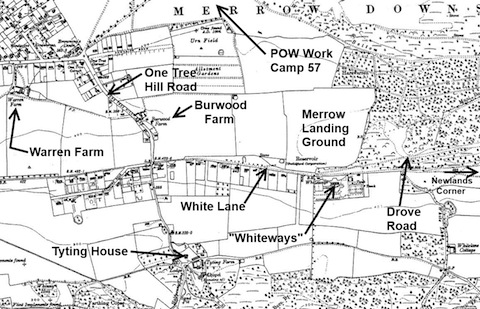
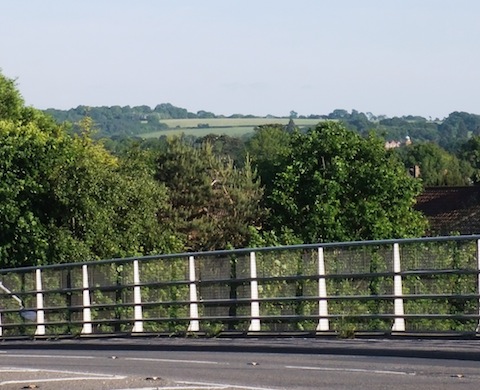
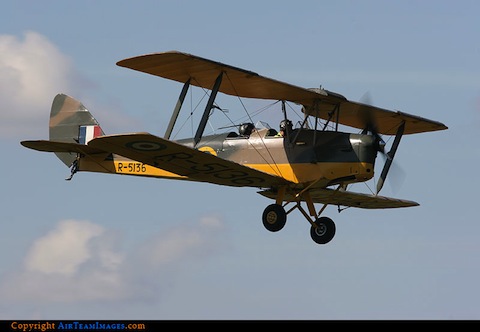
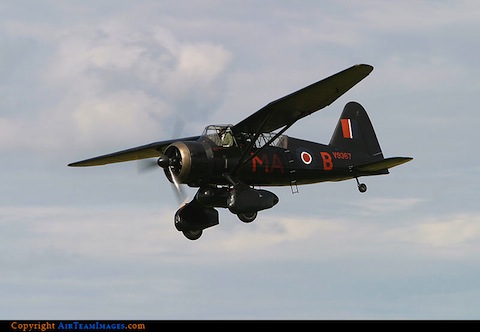
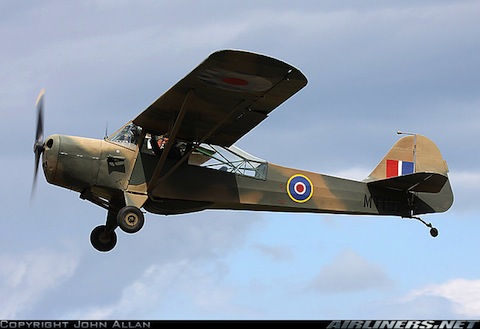
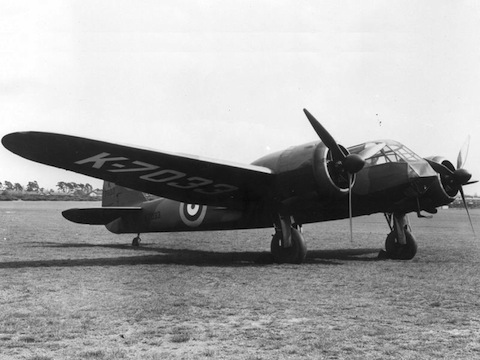
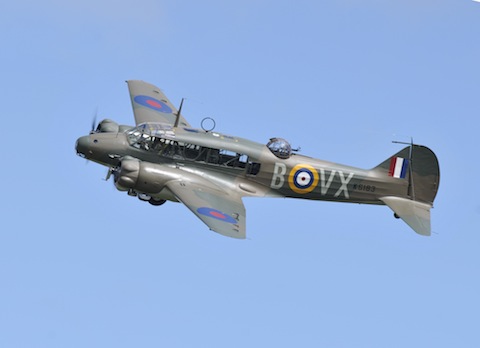



John Foster
June 22, 2013 at 6:18 pm
We boys went to the site several times during the war and watched the tiger moths, known as Chobham pheasants, landing and off. We used to climb the trees tops to get nearer the aircraft as they made their approach over the trees to the field.
One day a passing man told us it was a stupid thing to do as they could easily misjudge the approach and clip the trees.
On another occasion, the instructor and pupil stopped the engine and got out for a smoke. We chatted to them until they took off again. They made a point of heading straight towards us on take off which made us run quickly out of the way.
Frank Stratton
June 23, 2013 at 3:16 pm
Your photos reminded me of my flights in Tiger Moths and Avro Ansons in 1941.
I was 17 and in the Air Training Corps.
Ron Hepburn
October 22, 2015 at 7:22 pm
A Handley Page Halifax L9489 of 35 Squadron was shot down by an RAF night-fighter returning from a raid on Le Havre on March 10, 1941.
The pilot survived and another of the crew was injured.
The aircraft crashed near Normandy. The rest of the crew were killed.
On average there were 15 to 20 aircraft crashes per day throughout the war in the UK. Our freedom was hard bought.
[David Rose adds: The Halifax that was shot down by friendly fire crashed in a corner of a field near Merrist Wood in Worplesdon. In the mid 1990s the crash site was excavated and items from the wreckage were found. A memorial plaque was placed on the spot (now the the 14th green of Merrist Wood Golf Club) in 1997. For more details see my book (co-written with Graham Collyer) Guildford The War Years 1939-45.]